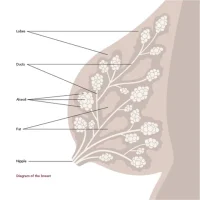The Health Benefits of Moderate Exercise for Mothers
Engaging in moderate physical activity enhances maternal health and fosters emotional well-being. Key advantages encompass improved cardiovascular fitness, optimized blood lipid profiles, and better insulin regulation. These physiological changes contribute to increased energy levels, reduced stress, and an overall sense of vitality.
Mothers who exercise moderately often report stronger emotional bonds with their infants, attributed to improved mental clarity and emotional stability. Additionally, studies highlight its role in alleviating symptoms of major depressive disorders, offering a non-pharmacological approach to mental health support.
Importantly, research confirms that moderate exercise does not compromise breast milk supply, composition, or infant growth. However, excessive or high-intensity workouts may temporarily elevate lactic acid levels and alter immunoglobulin A (IgA) content in breast milk, though these effects are typically short-lived and reversible.
This evidence underscores the safety and efficacy of moderate exercise for maternal health during the postpartum period.
Impact of Exercise on Breast Milk Supply and Composition
Research consistently demonstrates that moderate exercise does not negatively affect breast milk production, nutritional quality, or infant growth. Studies comparing active and sedentary breastfeeding mothers found no differences in milk volume, energy content, or macronutrient composition (protein, lactose, lipids). For example, a cross-sectional study of exclusively breastfeeding women showed that those engaging in aerobic exercise (e.g., running, swimming) maintained similar milk profiles to non-exercising mothers, provided caloric intake met their increased energy needs.
While some small-scale studies suggest a potential slight increase in milk supply among regularly exercising women, these findings lack statistical significance due to limited sample sizes. Importantly, high-intensity or exhaustive exercise may transiently alter specific components of breast milk, such as temporarily lowering immunoglobulin A (IgA) levels immediately post-workout. However, these changes are short-lived, with IgA concentrations returning to baseline within 60 minutes after exercise.
Overall, current evidence supports the safety of moderate physical activity during lactation, emphasizing that maintaining adequate nutrition is key to sustaining both maternal health and breastfeeding performance.
Exercise and Immune Components in Breast Milk
Current evidence suggests moderate physical activity does not compromise immunological factors in breast milk. Studies comparing exercising and non-exercising mothers found no differences in levels of IgA, lactoferrin, or lysozyme when exercise intensity remained moderate. These findings align with research demonstrating that moderate exercise programs, such as aerobic activities like swimming or running, maintain normal milk composition and infant growth outcomes when caloric intake meets energy demands.
However, exhaustive exercise may transiently reduce IgA concentrations in breast milk. A 1997 study observed a temporary decline in total IgA levels within 10–30 minutes after maximal-intensity workouts, though concentrations returned to baseline within an hour. Notably, breast emptying itself stimulated IgA production regardless of exercise intensity, suggesting a compensatory mechanism. Similar results were reported in animal studies, where strenuous exercise caused short-term immunosuppressive effects but was mitigated by prior moderate training.
For most breastfeeding mothers, exhaustive exercise is uncommon. Even among those who engage in high-intensity workouts, the transient dip in IgA during a single daily feeding is unlikely to impact infant immunity significantly. Practical recommendations include timing breastfeeding sessions 60 minutes post-exercise to allow IgA recovery and prioritizing moderate-intensity routines to avoid potential immune fluctuations.
These insights underscore the safety of moderate exercise during lactation while highlighting the body’s resilience in balancing physical activity and immune protection for infants.
Infant Response to Post-Exercise Breastfeeding
Research overwhelmingly indicates that infants do not reject breast milk following maternal exercise, even after high-intensity workouts. While a widely cited 1992 study suggested babies might fuss or refuse expressed milk after maximal exertion, methodological flaws cast doubt on its conclusions. The study used dropper feeding—an unfamiliar method for the infants—and mothers reported no prior breastfeeding issues post-exercise. Contemporary findings reinforce this perspective: a 2020 study observed no changes in infant acceptance of breast milk one hour after maternal exercise, even when mothers engaged in peak-intensity sessions that temporarily elevated lactic acid levels.
Persistent infant fussiness after strenuous exercise is likely unrelated to milk composition. Potential factors include environmental distractions or the taste of sweat on the breast. For recurrent cases, practical adjustments can help: expressing a small amount of milk (3–5 mL per breast) before nursing, delaying feeding by 30 minutes to allow lactic acid reduction, or slightly lowering workout intensity.
These strategies align with evidence that short-term metabolic shifts in milk (e.g., lactic acid spikes) resolve rapidly and pose no harm. Ultimately, current data supports breastfeeding immediately or shortly after exercise for most dyads, emphasizing maternal comfort and infant feeding patterns over theoretical concerns.
Practical Exercise Guidelines for Nursing Mothers
For optimal comfort during physical activity, consider breastfeeding your infant prior to exercise and wearing a well-fitted, supportive bra—particularly during high-impact activities like running or jumping. Sweat residue on the skin may cause some infants to resist nursing; rinsing the breasts or showering post-workout can mitigate this issue.
Mothers engaging in repetitive upper-body movements (e.g., weightlifting) should monitor for signs of plugged ducts, such as localized breast tenderness or lumps. If these occur, temporarily reducing exercise intensity and gradually reintroducing activity can help maintain breast health.
Hydration remains critical, as breastfeeding increases fluid demands. Aim to drink water before, during, and after workouts, aligning intake with nursing sessions to support both milk production and post-exercise recovery.
By balancing exercise with mindful self-care strategies, nursing mothers can sustain physical activity while prioritizing breastfeeding success.





